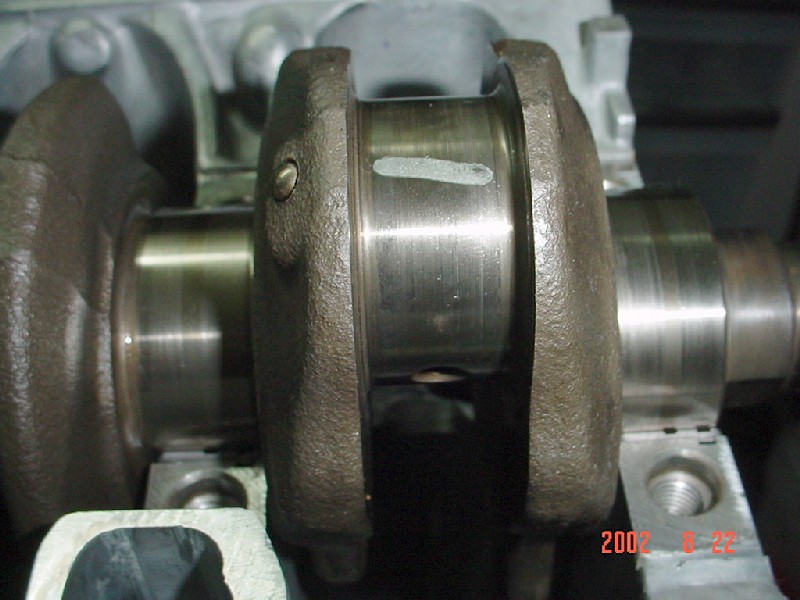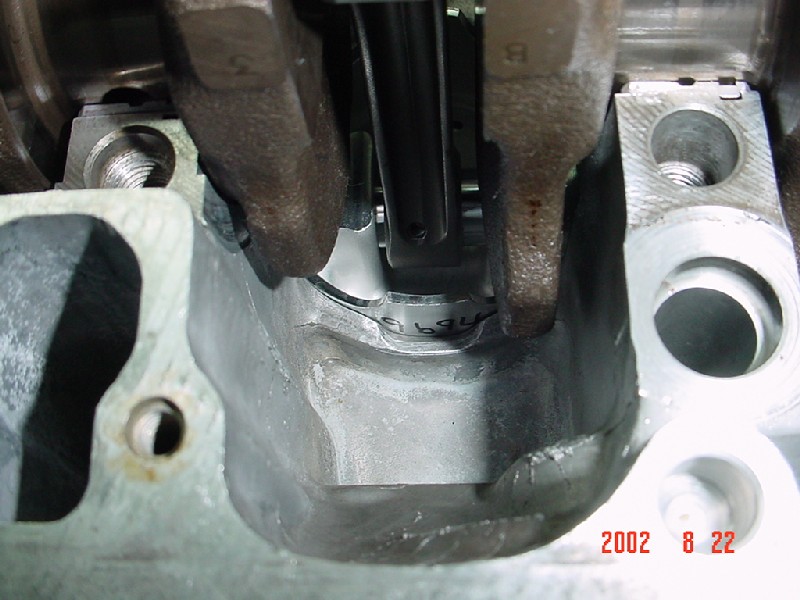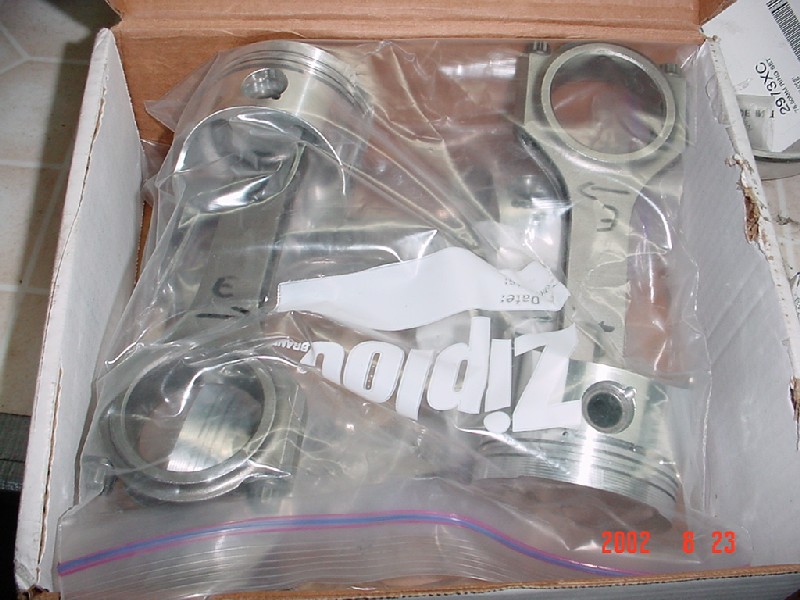Measuring rod bearing clearances...
Crank in place with #1 rod torqued to spec. A green strip of plastigage was placed on the crank...

After the rod bolts are torqued to spec, they are removed and the crushed plastigage is measured...

Notching the block was necessary to get the massive Eagle rods to clear. You can see how low the piston sits at BDC...

The pistons and rods are bagged and ready to go to the balancing shop. The crank, pistons/rods, harmonic balancer, flywheel, and pressure plate will be balanced together...

The rod bearing size is determined by a number that is stamped on the rod matched to a letter that is stamped on the crank. This 'code' gives you the bearing size. Eagle rods are all sized to size '3'. The letters on the crank can be seen here:

Main bearing chart from Helms manual:

I know that each Eagle rod is sized 3. Pairing that up with the letters stamped on the crank, my bearing codes are:
Rod #1: B3 (Green)
Rod #2: B3 (Green)
Rod #3: C3 (Brown)
Rod #4: A3 (Yellow)
Measured Clearances:
Rod #1: .0015"
Rod #2: .0013"
Rod #3: .0015"
Rod #4: .0015"
Factory Spec: .0009" to .0016"
Service Limit: .0020"
I used ACL Duraglide bearings for this application. I wanted my bearing clearances to be on the loose side of spec. That's where they are. I'm happy!





